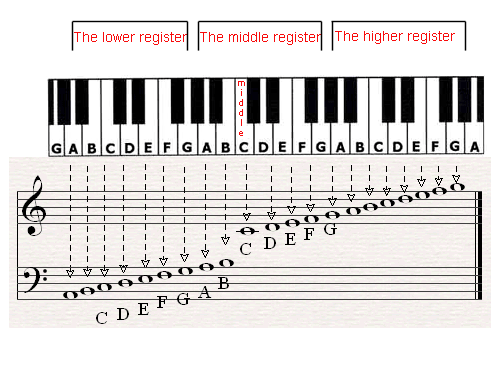Code: Select all
Visualize middle C on the staff for treble clef.
Now add B below C and D above C to the mental visualization.
Visualize C...
D...
B...
D...
C...
Continue visualizing, jumping around among these notes in a random fashion.
Become comfortable with this before moving on.
Add A below B and E above D.
Proceed as above.
Continue adding notes in this way until the grandstaff is covered.
If at any point it feels stressful to mentally visualize the given notes, remove a note or two for a while.It might also be done in conjunction with singing the notes, or the singing aspect might be appended after learning to visualize the notes on the staff well.
After becoming good at visualizing notes and hearing them in your head, it should be easy enough to imagine taking this further; visualing intervals, scales, chords, rhythms, melodies, progressions, whole pieces of music.
A side note, which might be helpful for the singing aspect, is to use a self-made sign language for intervals. It goes like this:
Use a sound reference for middle C, or whichever pitch that you want to start with. Sing the note, and on one hand, raise your index finger, as to count '1'. Proceed as follows for going through the intervals of the major scale:
1 - index finger
2 - index and middle
3 - index, middle, and ring
4 - index, middle, ring, and pinky
5 - index, middle, ring, pinky, and thumb
6 - thumb (fist and thumb up, looks like a 6)
7 - thumb and index (looks like a 7)
I'm sure that someone has thought of this idea before or has thought of something similar.
The way that I have used it (not extensively) is start with a few intervals of the major scale, in sequence, backward, then at random. Then add another interval, continuing as before. Eventually, you should be able to jump around from any interval to any other interval. I didn't quite take it far enough to get really good at that. It was a thought that I tinkered with here and there.
So instead of using this hand business, I was thinking that it could maybe be more useful to replace the hand signs with mental visaualization of intervals on the staff, as outlined above.
One aspect of it that I'm thinking about is that mental visualization is much more immediate (faster) than say, using hand signs, flashcards, or some other physical means. Maybe a con of this is that you are the source of notes being generated.
I guess I'm lookng for any input on the above, as well as any thoughts and techniques on mental visualization in general. Do you think that mental visualization would be a good tool for applying to music learning?



